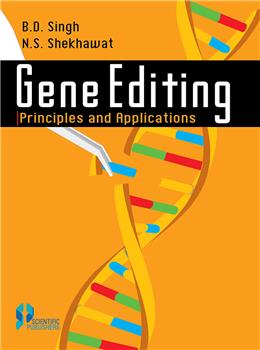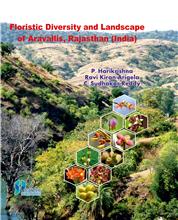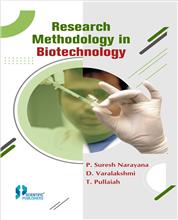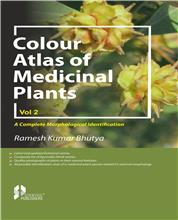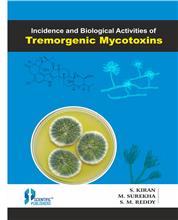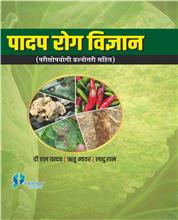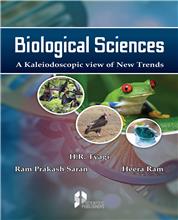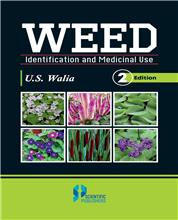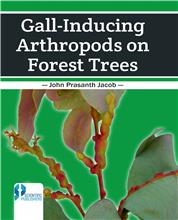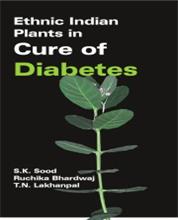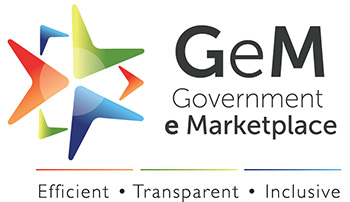1. DIRECTED MUTAGENESIS
1.1. Introduction
1.2. Physical and chemical mutagenesis
1.3. Transgenic technology
1.4. In vitro site-directed mutagenesis
1.5. Endogenous gene suppression
1.6. Gene targeting based on embryonic stem cells
1.7. In vivo site-directed mutagenesis by site-directed nucleases
1.8. The SDN technology
1.8.1. The SDN-1 technology
1.8.2. The SDN-2 technology
1.8.3. The SDN-3 technology
1.9. Oligonucleotide-directed mutagenesis
1.10. Base editing
1.11. Modulation of gene action
1.12. Gene drives
1.13. Ethical issues relevant to gene editing
1.14. Regulation of gene editing
1.15. Achievements
1.16. Future perspectives
1.17. Conclusions
2. MEGNUCLEASES AND CHIMERIC OLIGONUCLEOTIDES
2.1. Introduction
2.2. Homing endonucleases
2.3. Meganucleases
2.4. Redesigning meganucleases for novel genomic sites
2.5. Meganickases (MNickases)
2.6. Off-target activity
2.7. Applications of meganucleases
2.8. MegaTALs
2.9. Meganucleases, ZFNs and TALENs
2.10. Advantages and limitations of meganucleases
2.11. Chimeric oligonucleotides
2.12. Oligonucleotide-directed mutagenesis
2.13. A generalized procedure for oligonucleotide-directed mutagenesis
2.14. Applications of chimeric oligonucleotides
2.15. Advantages and limitations of chimeric oligonucleotides
2.16. Regulation of ODM products
2.17. Future perspectives
2.18. Conclusions
3. ZINC-FINGER NUCLEASES
3.1. Introduction
3.2. FokI endonuclease
3.3. Zinc finger proteins
3.4. Creation of novel zinc finger proteins
3.5. High throughput creation of ZFPs
3.6. Designing of zinc-finger nucleases
3.7. Zinc finger nickases (ZFNickases)
3.8. Delivery of ZFNs and donor DNA into cells
3.9. In vivo DNA cleavage by zinc finger nucleases
3.10. Repair of double strand breaks
3.10.1. Non-homologous End Joining (NHEJ)
3.10.2. Homology-independent targeted integration (HITI)
3.10.3. Homology directed repair (HDR)
3.10.4. Micro-homology-mediated end-joining (MMEJ)
3.10.5. Enhancing the frequency of HDR
3.11. ZFN-induced mutations
3.12. Off-target cleavage (ZFN toxicity)
3.12.1. Assessment of off-target cleavage
3.12.2. Controlling ZFN Toxicity
3.13. ZFN applications
3.14. Merits and limitations of ZFNs
3.15. Hybrid zinc finger nucleases
3.16. Conclusions
4. TRANSCRIPTION-ACTIVATOR LIKE EFFECTOR
NUCLEASES (TALENs)
4.1. Introduction
4.2. Transcription-activator like effector (TALE) proteins
4.3. DNA recognition code of TALE proteins
4.4 Transcription-activator like effector nucleases (TALENs)
4.5. TALE nickases
4.6. TALE activators (TALEa) and TALE repressors (TALEr)
4.7. Selection of target site
4.8. Synthesis of novel TALEs
4.8.1. Standard cloning-based methods
4.8.2. Golden Gate cloning-based TALEN assembly
4.8.3. Solid-phase assembly methods
4.8.4. Simple TALE assembly reaction (STAR)
4.8.5. ULtiMATE system for TALE construction
4.9. Delivery of TALENs
4.10. Off-target cleavage
4.11. Detection of mutants
4.12. Applications of TALENs
4.13. TALENs for gene therapy
4.14. Merits of TALENs
4.15. Limitation of TALENs
4.16. Achievements
4.17. Future perspectives
4.18. Conclusions
5. CRISPR-Cas9 SYSTEM
5.1. Introduction
5.2. CRISPR-Cas system of prokaryotic immunity
5.3. CRISPR-Cas SDN System
5.3.1. Single guide RNA (sgRNA)
5.3.2. Cas9 nuclease
5.4. Designing of CRISPR SDNs
5.5. Guide RNA/sgRNA Library
5.6. CRISPR-Cas9 nickases
5.7. Split-Cas9 nuclease
5.8. Delivery of CRISPR-Cas9
5.9. Off-target effects
5.9.1. Monitoring off-target cleavage
5.9.2. Strategies for minimizing off-target editing
5.9.2.1. Strategies based on sgRNA
5.9.2.2. Strategies based on Cas9 nuclease
5.9.3. Filtering out the phenotypic effects of off-target mutations
5.10. Minimizing undesired genetic changes at the target site
5.11. RNA cleavage by CRISPR-Cas9
5.12. Alternative CRISPR-Cas systems
5.13. selection of a suitable CRISPR-Cas system
5.14. Anti-CRISPR proteins
5.15. Hybrid site-directed effectors
5.16. Applications of CRISPR-Cas9 SDN system
5.17. Advantages of CRISPR-Cas9 SDN system
5.18. Limitations of CRISPR-Cas9 SDN System
5.19. Applications of targeted gene modifications
5.20. Selection of a suitable SDN System
5.21. Achievements
5.22. Future directions
5.23. Conclusions
6. BASE EDITING
6.1. Introduction
6.2. Base editing
6.3. G:C-to-A:T base editors
6.3.1. G:C-to-A:T base editors with different PAM sequence requirements
6.3.2. G:C-to-A:T base editors with improved specificity
6.3.3. G:C-to-A:T base editors with increased efficiency
6.3.4. G:C-to-A:T base editors for diversifying base editing
6.4. A:T-to-G:C base editors
6.5. RNA base editing
6.6. Base editors for plants
6.7. Delivery of base editors
6.8. Bystander mutations
6.9. Off-target effects
6.10. Estimation of mutation frequency
6.11. Regulation of base editing
6.12. Gene inactivation
6.13. Induction of targeted mutations in post-mitotic or quiescent (G0) cells
6.14. Applications
6.15. Achievements
6.16. Advantages
6.17. Limitations
6.18. Comparison between base editing and genome editing
6.19. Comparison between precise sequence alterations by HDR and
base editing
6.20. Future directions
6.21. Conclusions
7. GENE EDITING FOR PLANT BREEDING
7.1. Introduction
7.2. Mutation breeding
7.3. Modern breeding tools
7.4. Requirements for gene editing in plants
7.5. SDN Technology
7.5.1. General procedure for gene editing in plants
7.5.2. Delivery of SDNs and donor DNAs into plant cells
7.5.3. The SDN-1 technology
7.5.4. The SDN-2 technology
7.5.5. The SDN-3 technology
7.5.6. Applications of the SDN Technology
7.6. Mutation detection
7.7. Off-target editing
7.8. Base editing in plants
7.8.1. Base editors for plants
7.8.2. Some examples of base editing in plants
7.8.2.1. Herbicide resistance
7.8.2.2. Plant architecture
7.8.2.3. Disease resistant plants
7.9. Applications of gene editing in plant breeding
7.9.1. Flowering time
7.9.2. Parthenocarpy
7.9.3. In vivo haploid production
7.9.4. Environment-sensitive male sterility
7.9.5. Yield and yield traits
7.9.6. Quality traits
7.9.7. Virus Resistance
7.9.8. Resistance to other biotic stresses
7.9.9. Herbicide resistance
7.9.10. Drought resistance
7.9.11. Nutrition improvement
7.9.12. Metabolic engineering
7.10. Multiplexed genome editing
7.11. Isolation of transgene-free mutant lines
7.12. Programmable gene regulation in plants
7.13. Regulation of gene edited crop varieties
7.14. Endogenous gene suppression
7.14. Endogenous gene suppression: RNAi vs. gene editing
7.15. Gene editing vs. transgenic technology
7.16. Merits of gene editing
7.17. Limitations of gene editing
7.18. Achievements
7.19. Future perspectives
7.20. Conclusions
8. GENE EDITING IN ANIMAL BREEDING
8.1. Introduction
8.2. animal breeding
8.3. General procedure for genome editing in animals
8.3.1. Embryonic stem cell technology
8.3.2. Microinjection into oocytes
8.3.3. Editing of foetal fibroblasts followed by somatic cell nuclear transfer
8.4. Applications of genome editing
8.4.1. Animal models of human diseases
8.4.2. Xenotransplantation
8.4.3. Animal bioreactors
8.4.4. Gene editing for animal improvement (agricultural breeding)
8.4.4.1. Milk quality
8.4.4.2. Meat yield and quality
8.4.4.3. Disease resistance
8.4.4.4. Thermoregulation
8.4.4.5. Welfare traits
8.4.4.6. Quantitative traits
8.4.5. Implementation of modern breeding schemes
8.5. Crispr babies
8.6. Off-target and unintended on-target editing
8.7. Ethical issues
8.8. Regulatory perspectives
8.9. Advantages and limitations
8.10. Achievements
8.11. Future perspectives
8.12. Conclusions
9. HUMAN HEALTH
9.1. Introduction
9.2. SDNs in human health
9.3. Genetic interaction (GI) maps
9.4. Target site selection
9.5. Therapeutic genetic changes
9.6. ‘Safe’ harbour
9.7. Gene therapy
9.8. Vectors for mammalian cells
9.9. Delivery methods
9.10. Target cells for gene editing
9.11. Minimum editing efficiency needed for therapy
9.12. Cancer immunotherapy
9.13. Virus resistance
9.13.1. Targeting viral infection, replication and propagation
9.13.2. Targeting the provirus in cells with latent infection
9.14. Cholesterol level
9.15. Duchenne muscular dystrophy
9.16. Allergic and immunologic diseases
9.17. Functional toxicity assays for gene editing
9.19. Regulatory considerations
9.20. Advantages of gene editing-based gene therapy over conventional gene therapy
9.21. Limitations of gene editing for gene therapy
9.22. Clinical trials
9.23. Achievements
9.23. Future perspectives
9.25. Conclusions
10. MODULATION OF GENE EXPRESSION
10.1. Introduction
10.2. Regulation of gene action in eukaryotes
10.2.1. Chromatin activation
10.2.2. Transcription regulator proteins
10.3. Site-directed transcription factors
10.3.1. Chimeric TALE effectors
10.3.2. CRISPR-mediated transcription activation/repression
10.3.2.1. CRISPR-interference (CRISPRi) and CRISPRactivation (CRISPRa)
10.3.2.2. Modulation of transcription level
10.3.2.3. Using several site-directed epigenetic effectors in the same cell
10.3.2.4. Temporal and/or spatial regulation of CRISPRa/i
10.3.3. Factors affecting epigenome editing
10.3.4. CRISPRi vs. RNAi
10.4. Modulation of chromatin organization
10.5. Targeted Relocation of ncRNAs
10.6. Off-target activation/repression
10.7. Genetic interaction (GI) maps
10.8. Imaging of specific genomic loci
10.9. Directed evolution of proteins
10.10. Site-directed recombinases and transposases
10.11. Molecular detection methods
10.12. Isolation of specific endogenous mRNAs
10.13. Targeted mRNA tracking
10.14. Identification and characterization of cis-regulatory regions
10.15. Therapeutic applications
10.16. Specificity assay for programmable DNA binding systems
10.17. CRISPR barcodes
10.18. Future perspectives
10.19. Conclusions
11. GENETIC MODIFICATION OF NATURAL POPULATIONS
11.1. Introduction
11.2. Gene drive systems
11.3. Homing-based gene drives
11.4. Classification of homing-based gene drives
11.5. Architecture of homing-based gene drives
11.6. Selection of genomic sites for gene drive integration
11.7. Spreading of gene drives in natural populations
11.8. Factors affecting the rate of spread of gene drives
11.9. Efficacy of gene drives
11.10. Applications of gene
11.10.1. Controlling disease vector populations
11.10.2. Agricultural productivity and sustainability
11.10.3. Controlling invasive species
11.10.4. Rescue of natural populations
11.10.5. Animal and plant breeding
11.10.6. Basic studies
11.11. Gene drive monitoring
11.12. Unintended effects of gene drives (Biosafety issues)
11.12.1. Off-target activity
11.12.2. Loss of heterozygosity
11.12.3. Spread of gene drives into non-target populations
11.12.4. Movement of gene drives into non-target species
11.12.5. Unanticipated negative consequences for the ecosystems
11.12.6. Failure of ongoing gene drive control measures
11.12.7. Use of gene drives organisms as bioweapons
11.13. Risk assessment for gene drives
11.14. Gene drive safeguards and control strategies
11.14.1. Immunization of a population
11.14.2. Reversal of undesirable genetic alterations
11.14.3. Inactivation of gene drives
11.14.4. Removal of gene drives
11.14.5. Precise targeting of subpopulations
11.14.6. Confining gene drives to laboratory strains
11.14.7. Limiting population suppression
11.14.8. Daisy chain gene drives
11.15. Gene drive resistance
11.16. Ethical issues relevant to gene drives
11.17. Regulation of gene drives
11.18. Advantages of gene drives
11.19. Limitations of gene drives
11.20. Achievements
11.21. Future perspectives
11.22. Conclusions
12. BIOSAFETY AND ETHICAL CONCERNS
12.1. Introduction
12.2. The ecosystem for innovations in biotechnology
12.3. Regulation of innovations in biotechnology
12.4. Biosafety concerns with gene-edited crops and animals
12.5. Ethical issues relevant to gene editing in plants and animals
12.6. Regulation of gene edited plants
12.7. Regulation of gene edited animals
12.8. Regulation of gene drives
12.9. Human genome editing
12.9.1. Ethical issues in clinical somatic cell genome editing
12.9.2. Regulation of gene therapies
12.10. Human germline genome editing
12.10.1. Safety concerns in human germline genome editing
12.19.2. Ethical issues in human germline gene editing
12.10.2.1. Ethical issues in germline gene editing for basic research
12.10.2.2. Ethical issues in germline gene editing for preclinical research
12.10.2.3 Ethical issues in germline gene editing for clinical application
12.10.3. The NASEM (2017) report
12.10.4. Regulation of human germline gene editing
12.11. International harmonization of regulatory regimes
12.12. Socio-economic aspects of regulatory regimes
12.13. Future perspectives
12.14. Conclusions
GLOSSARY
REFERENCE
